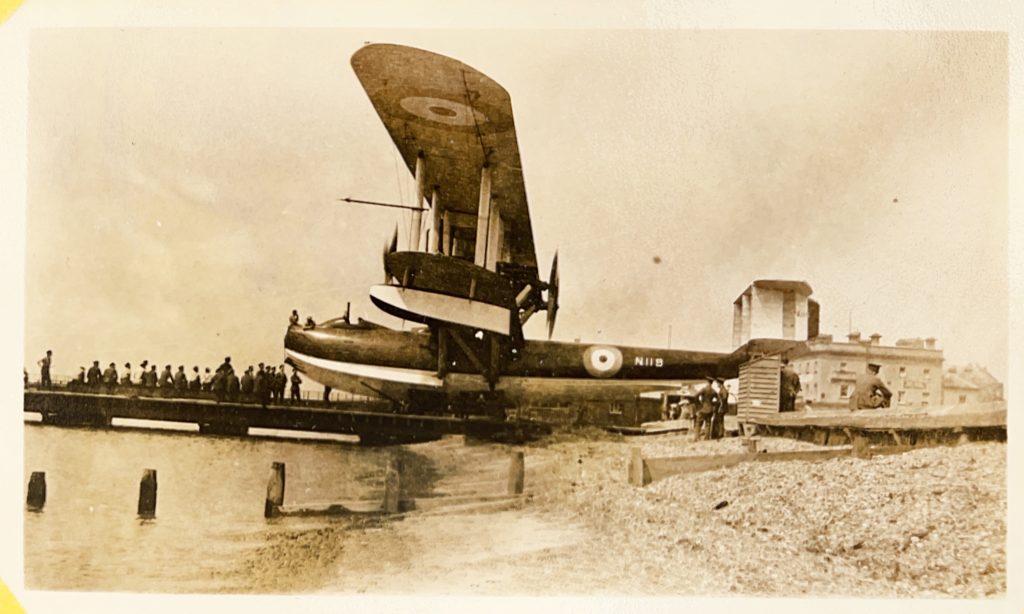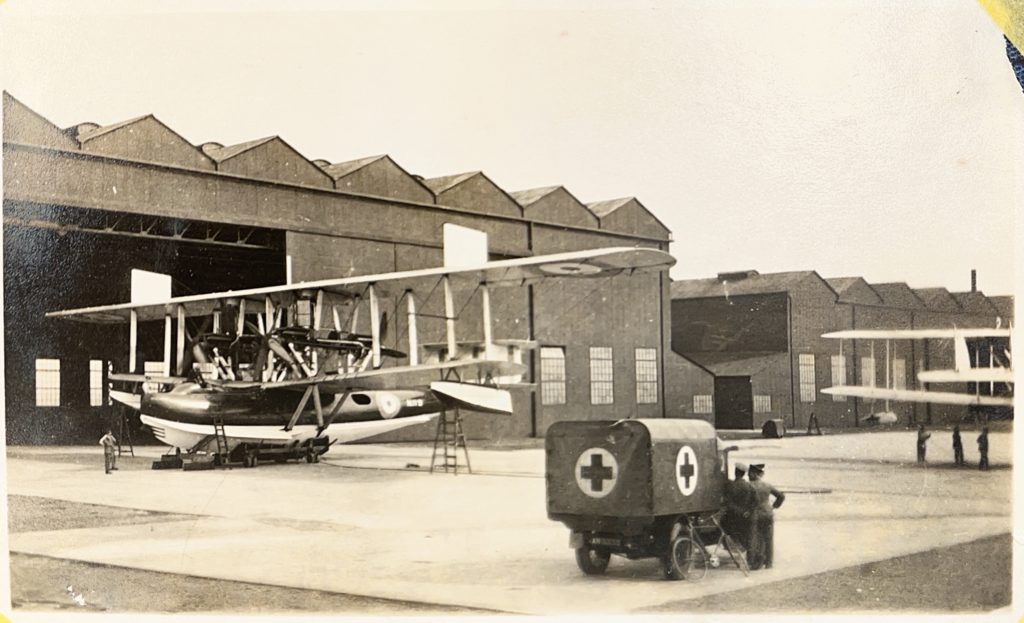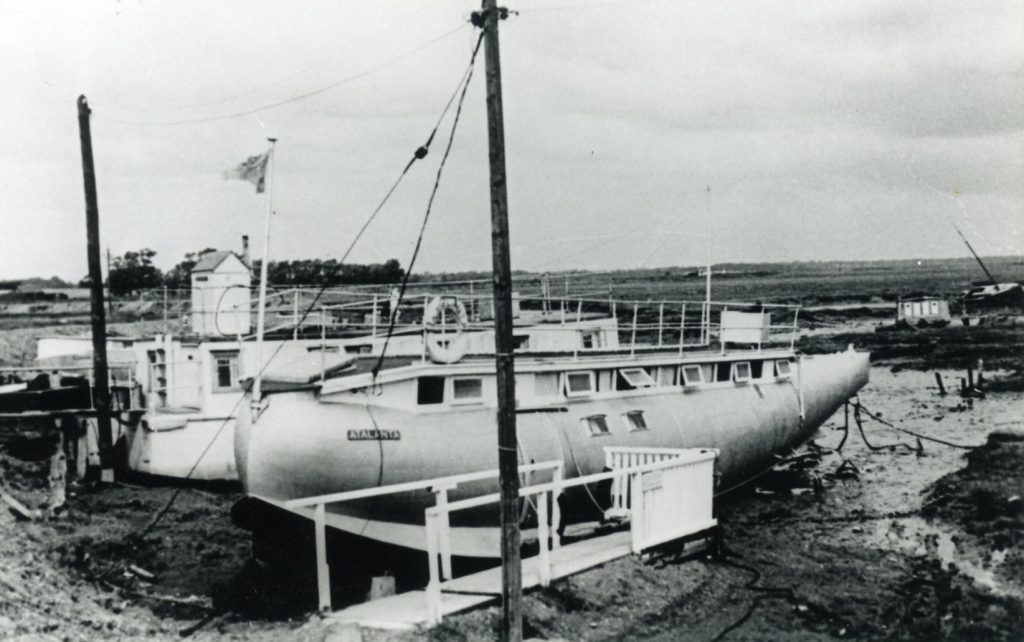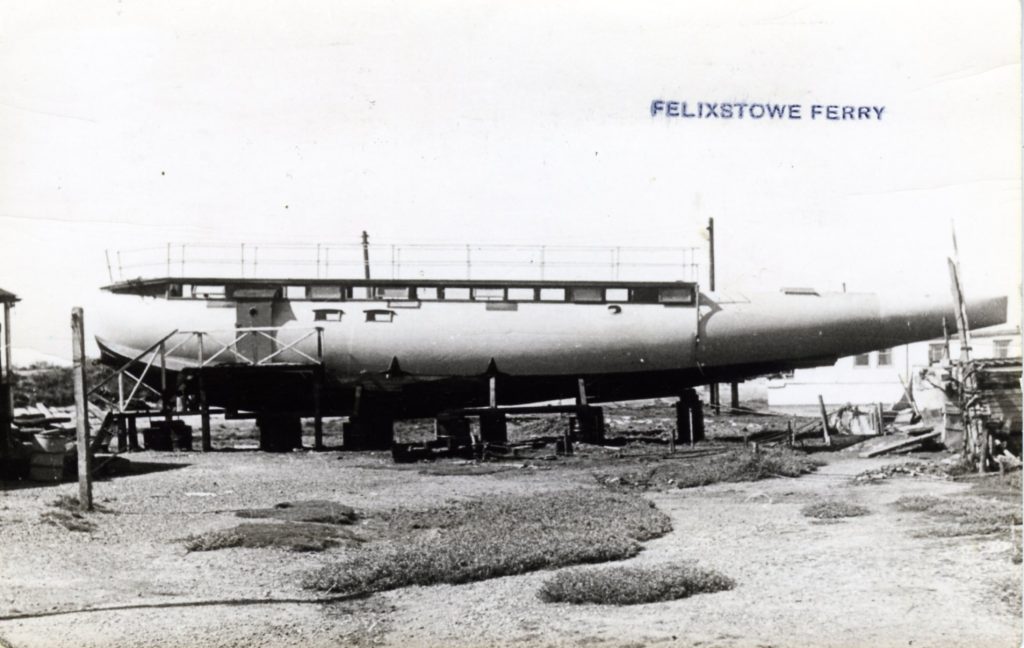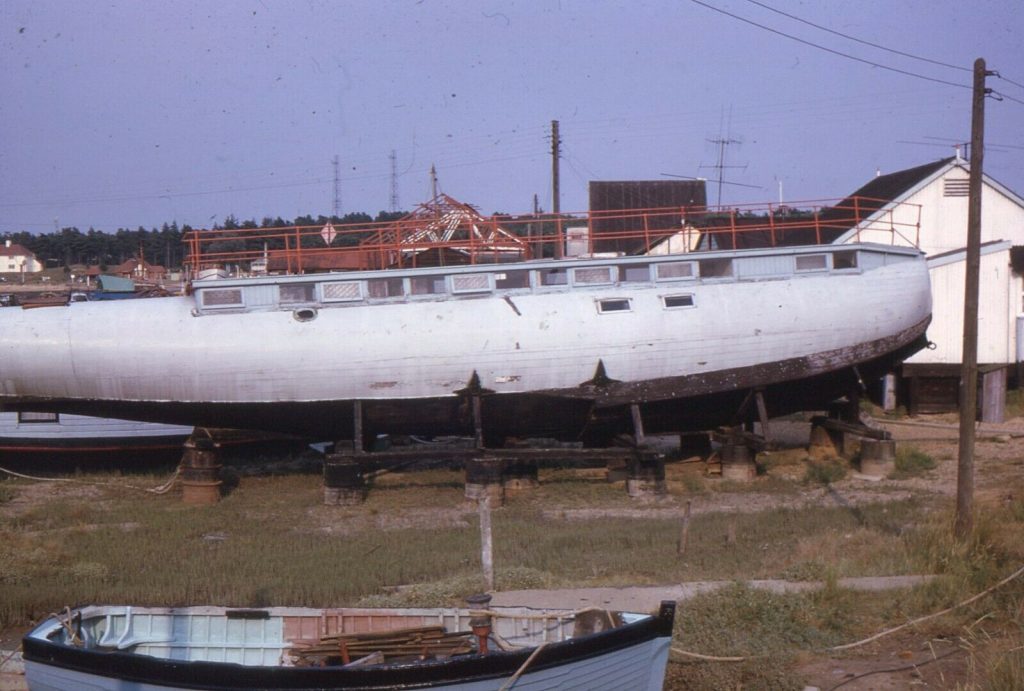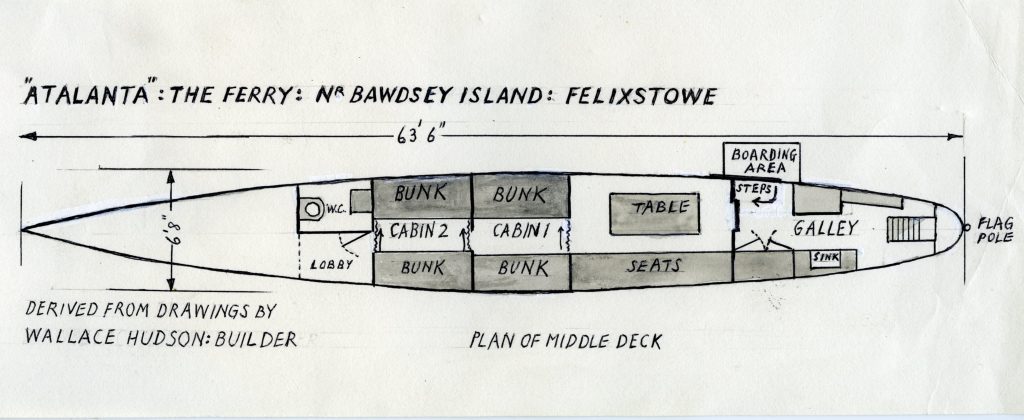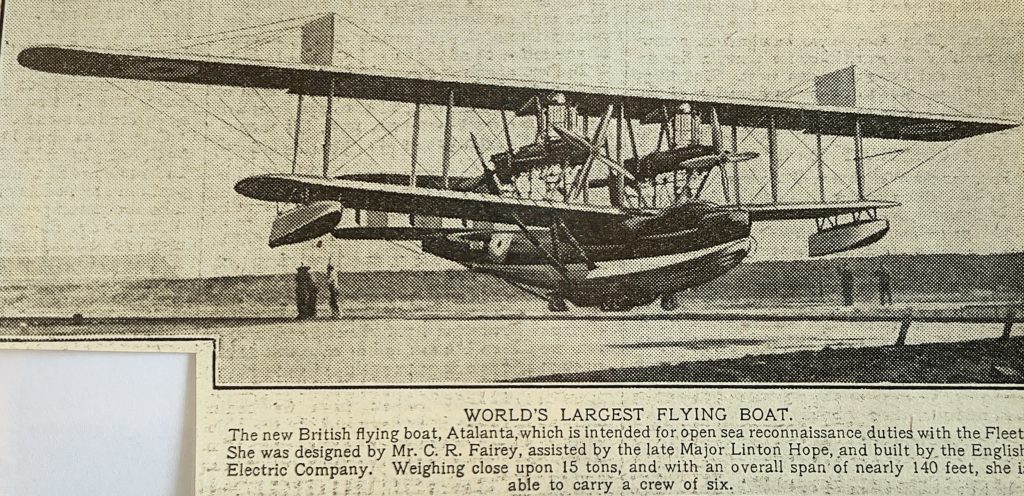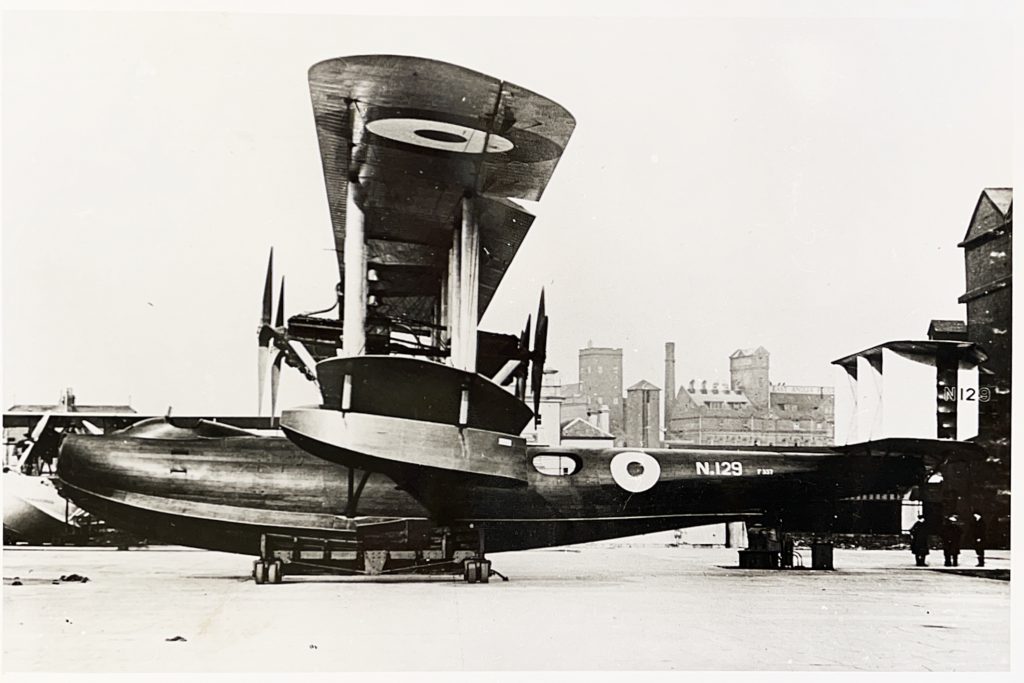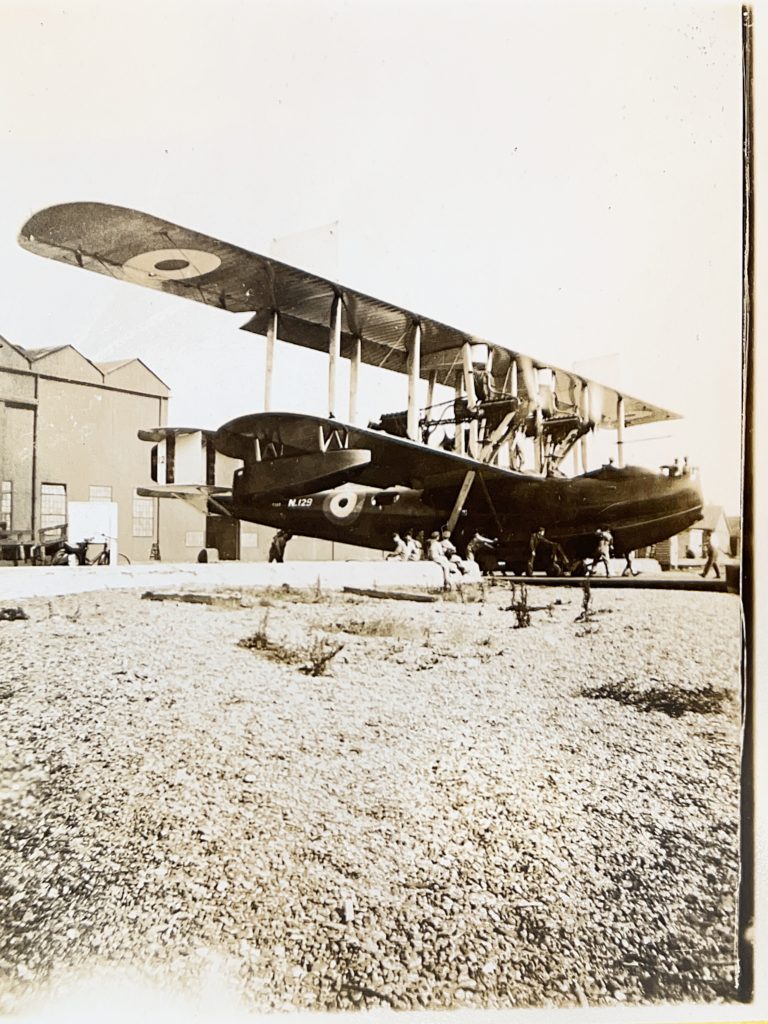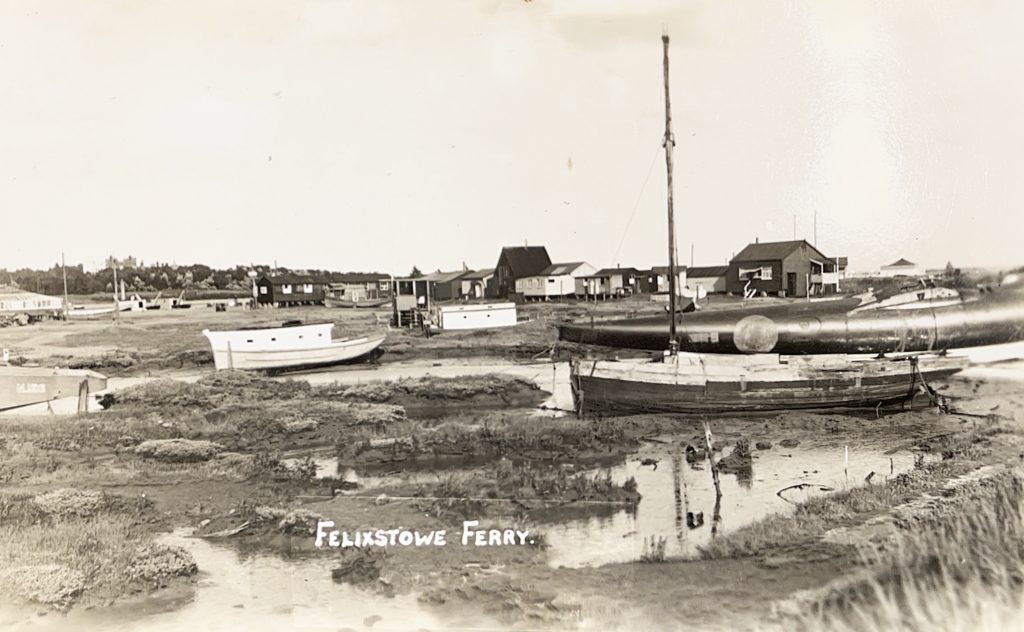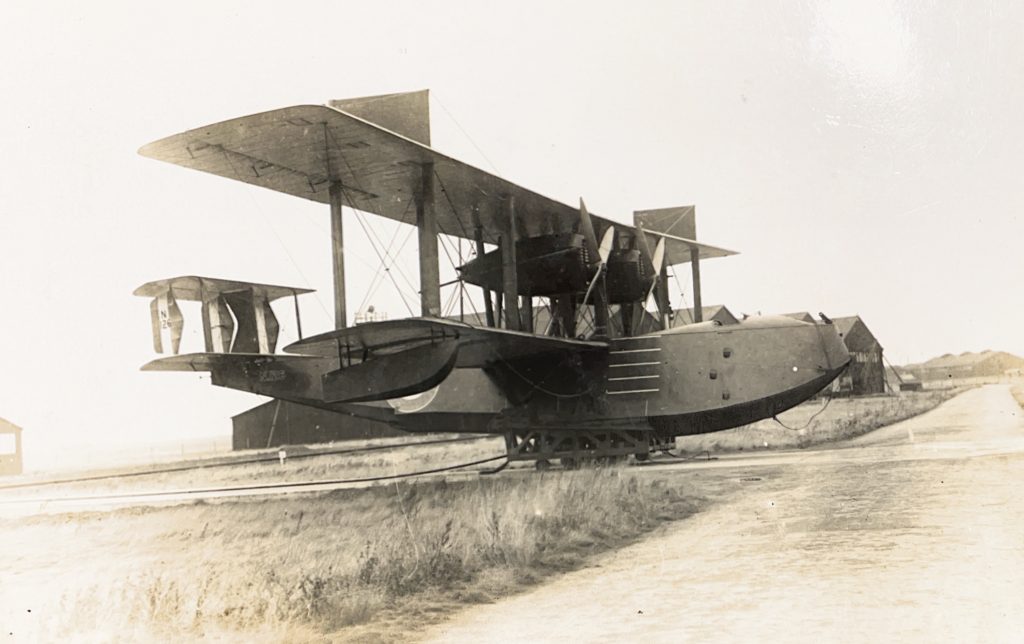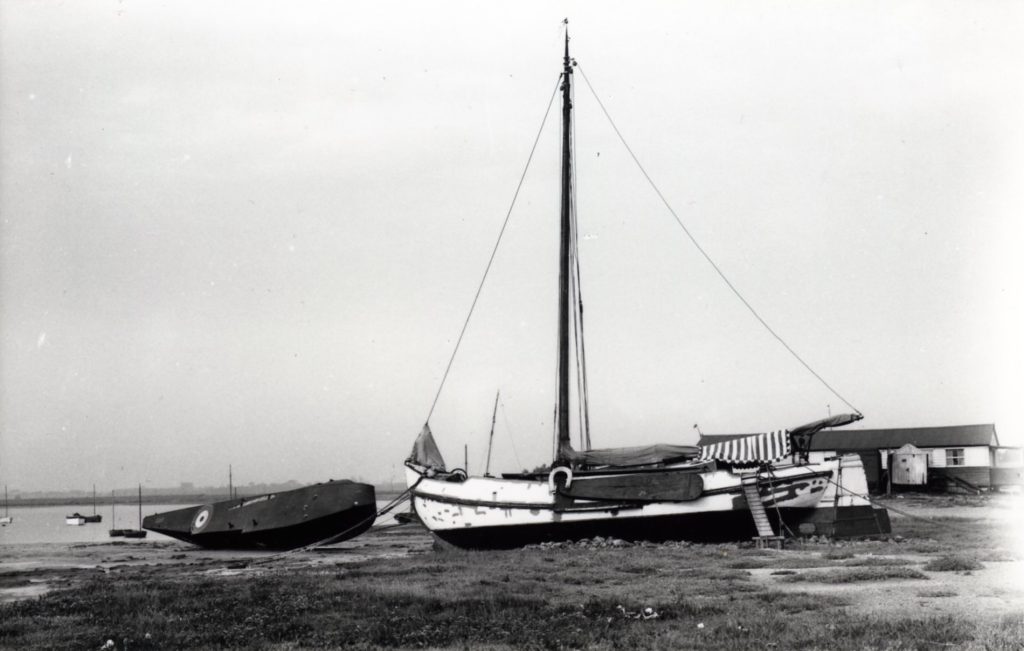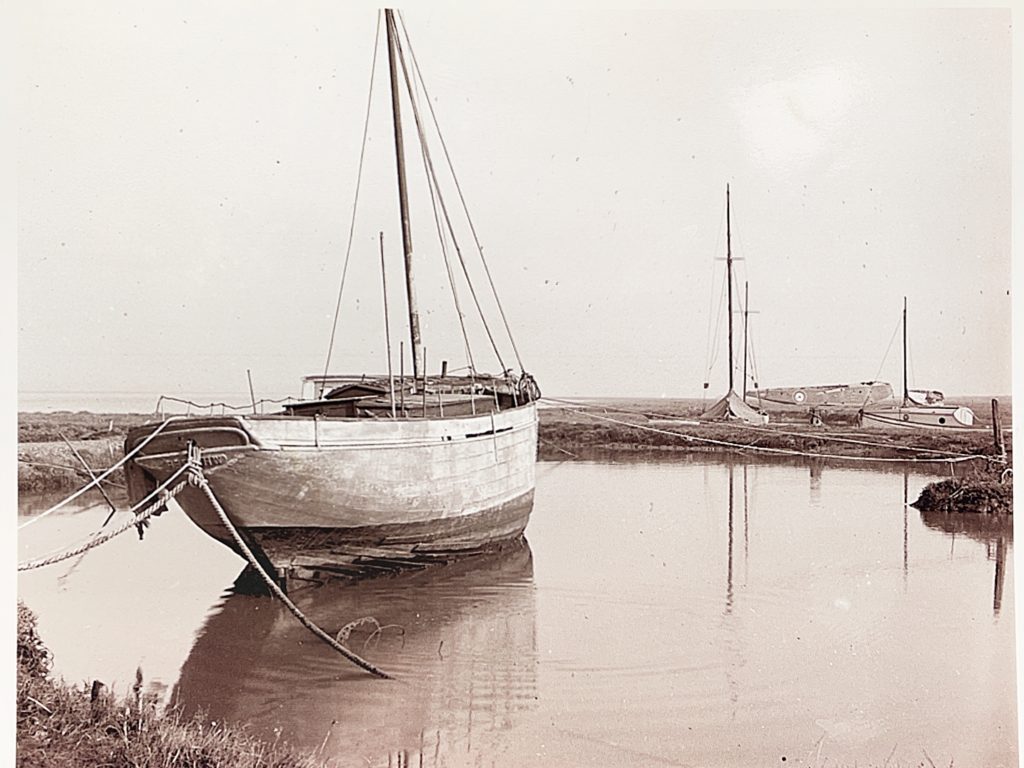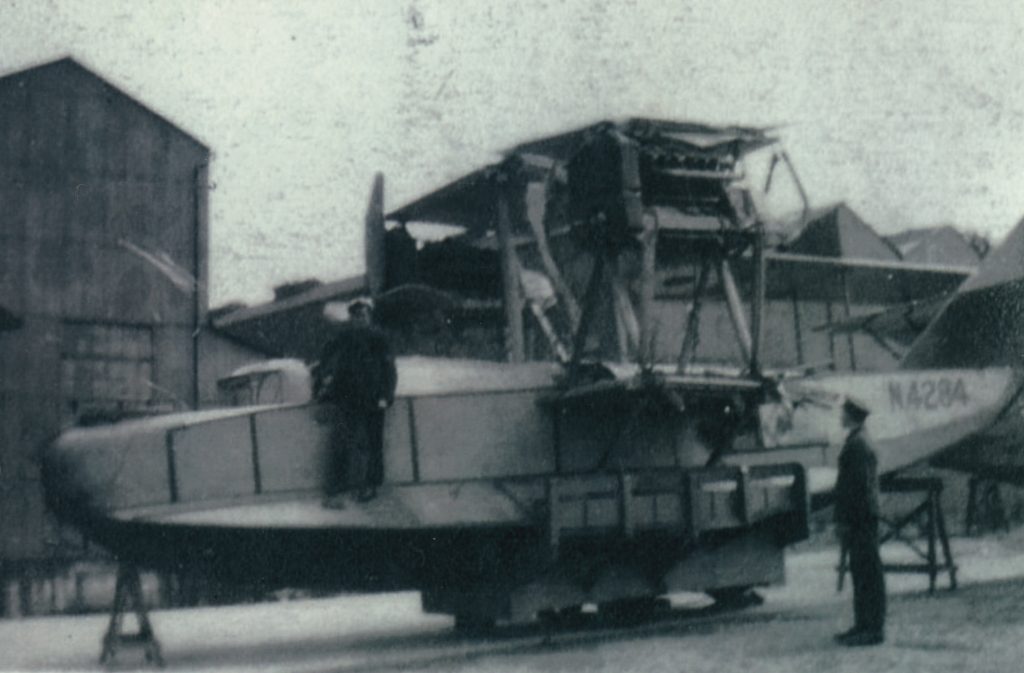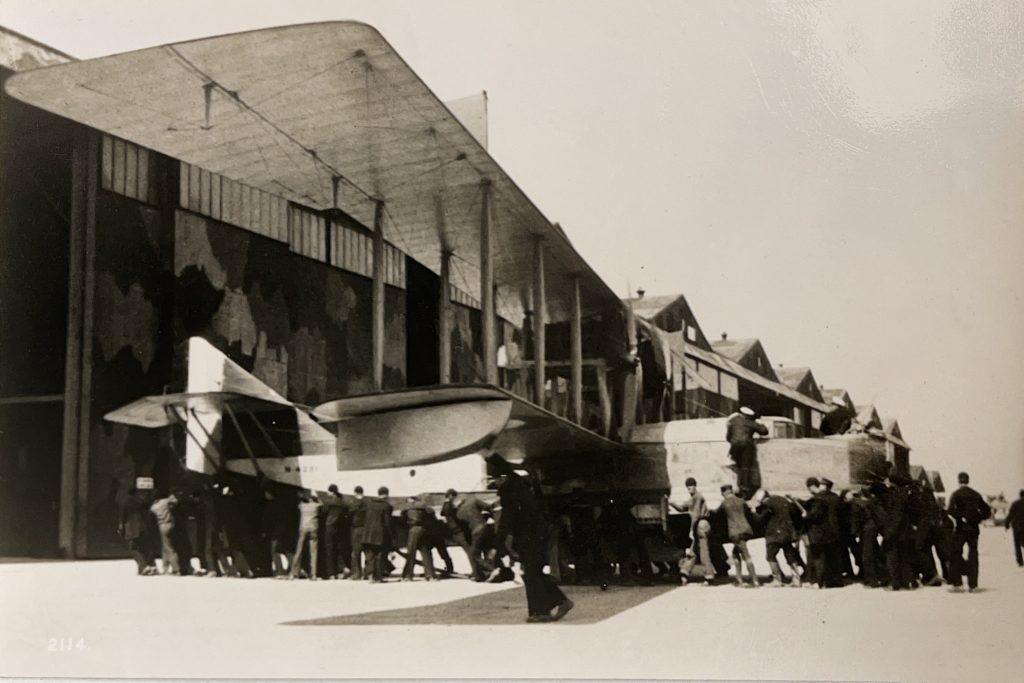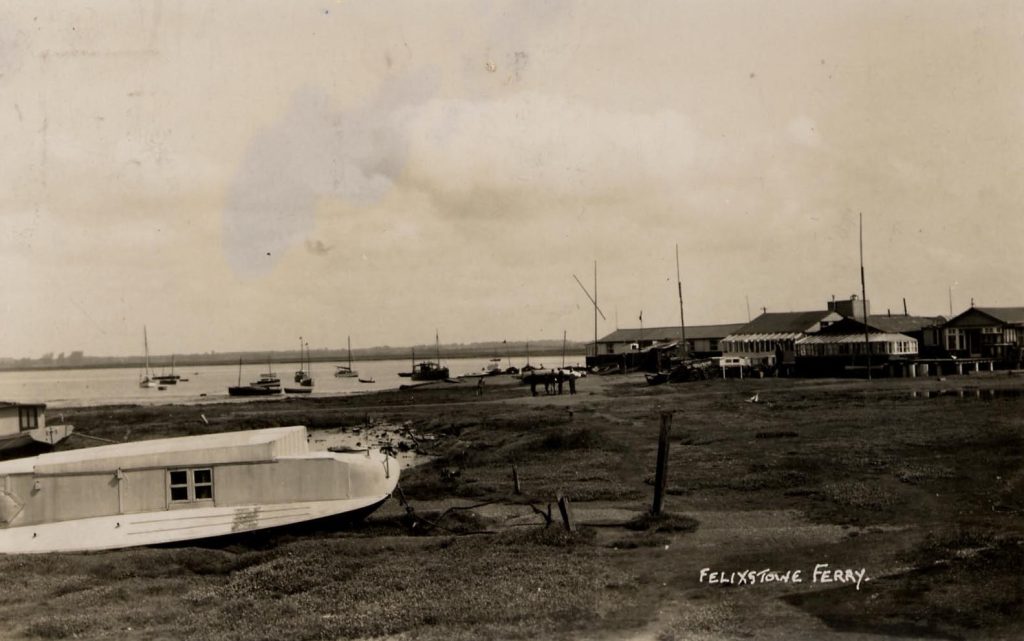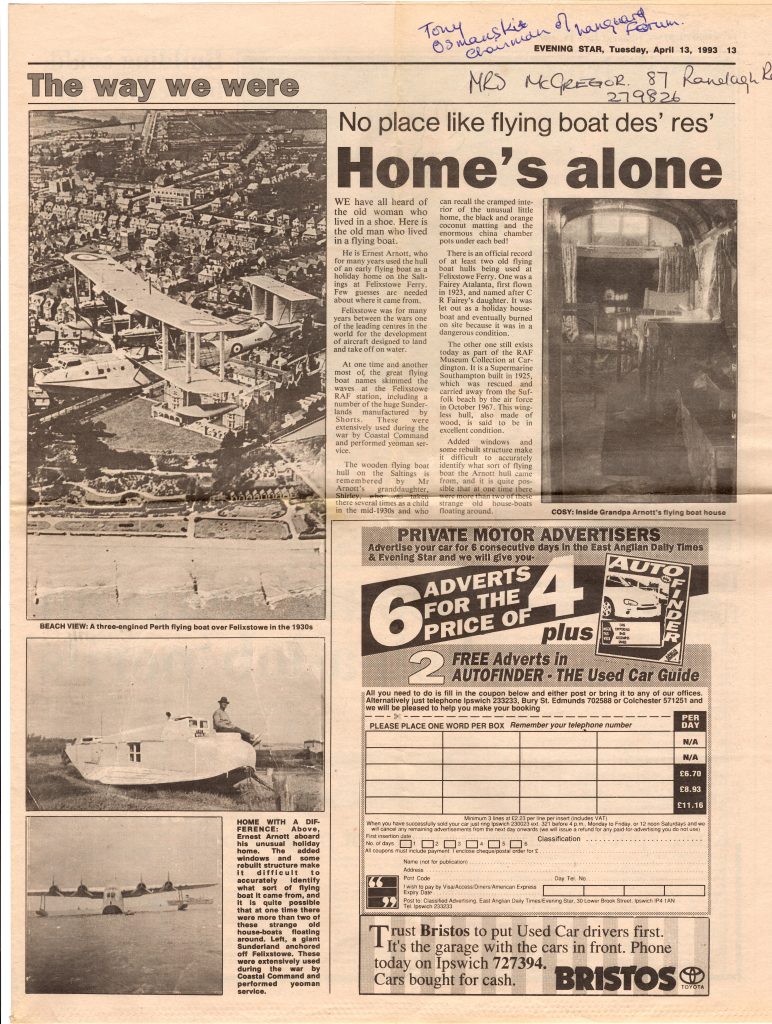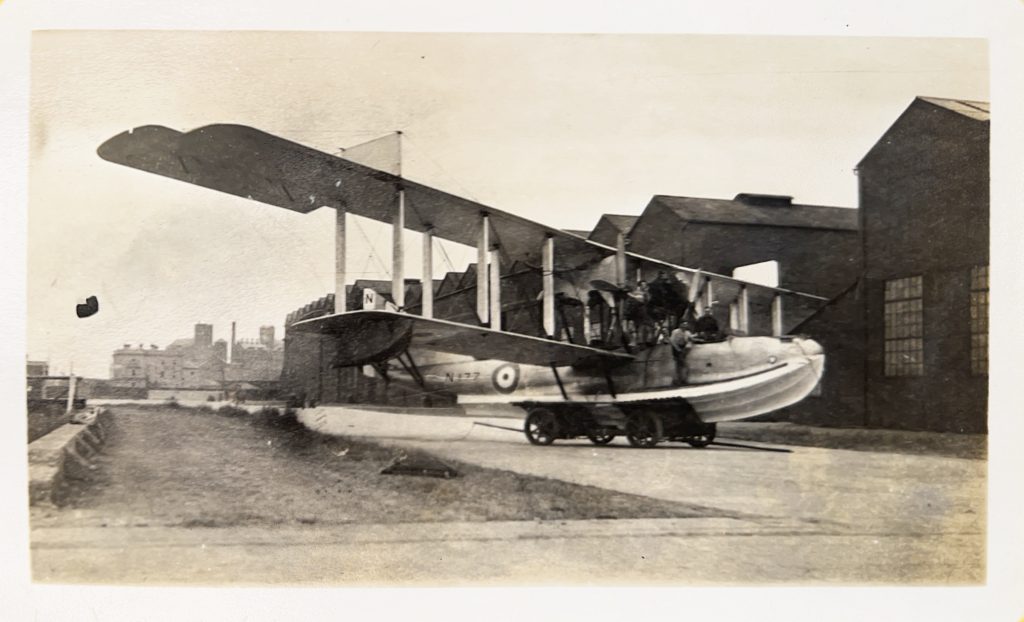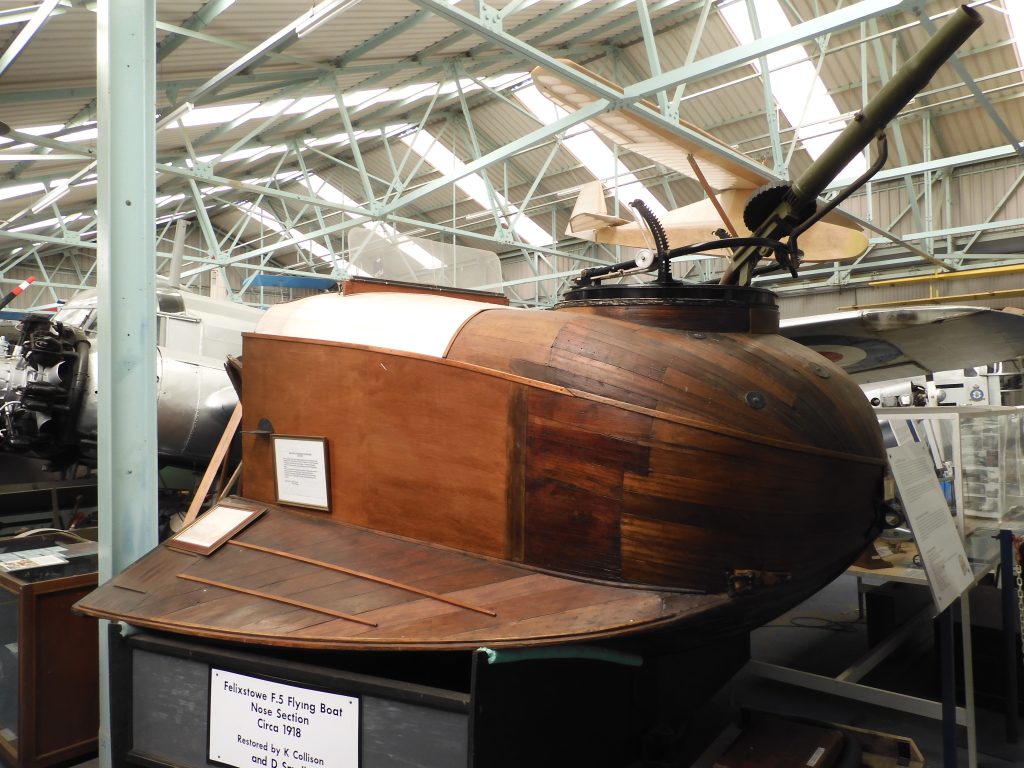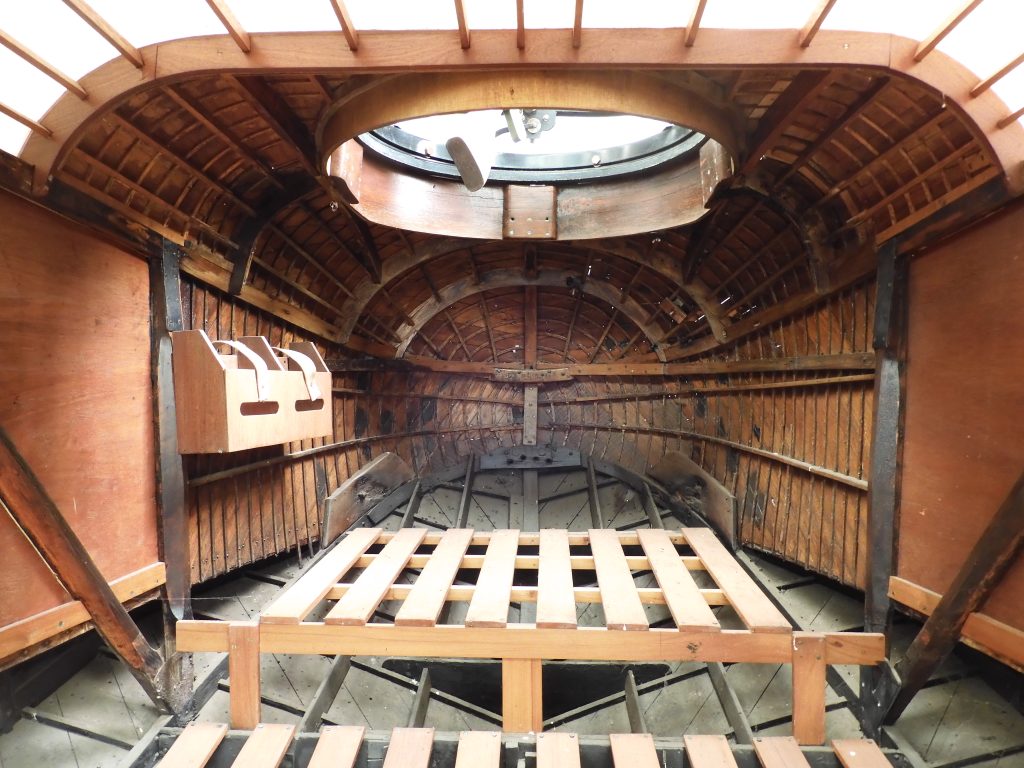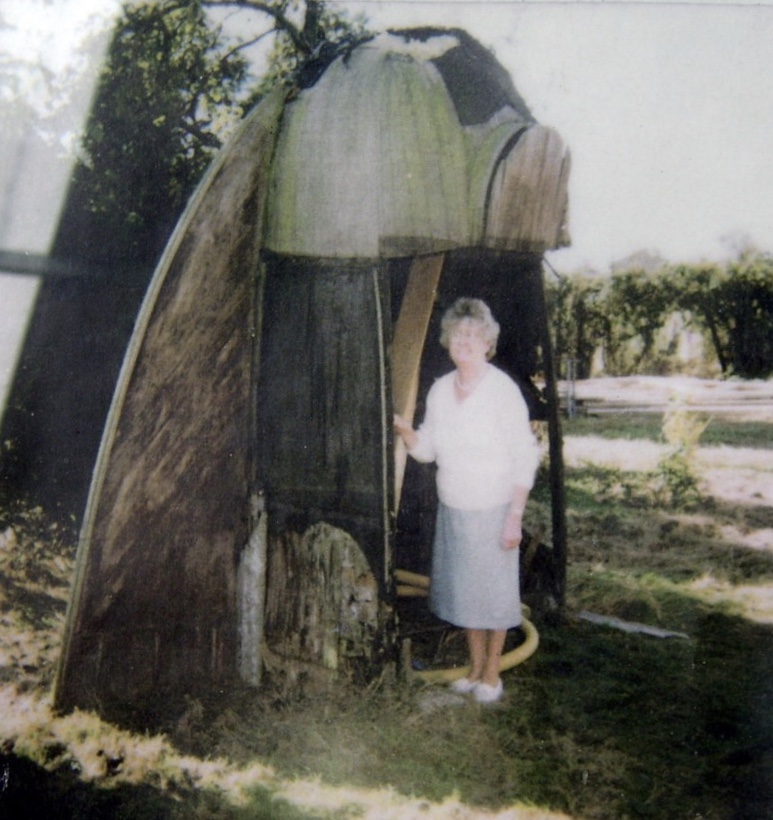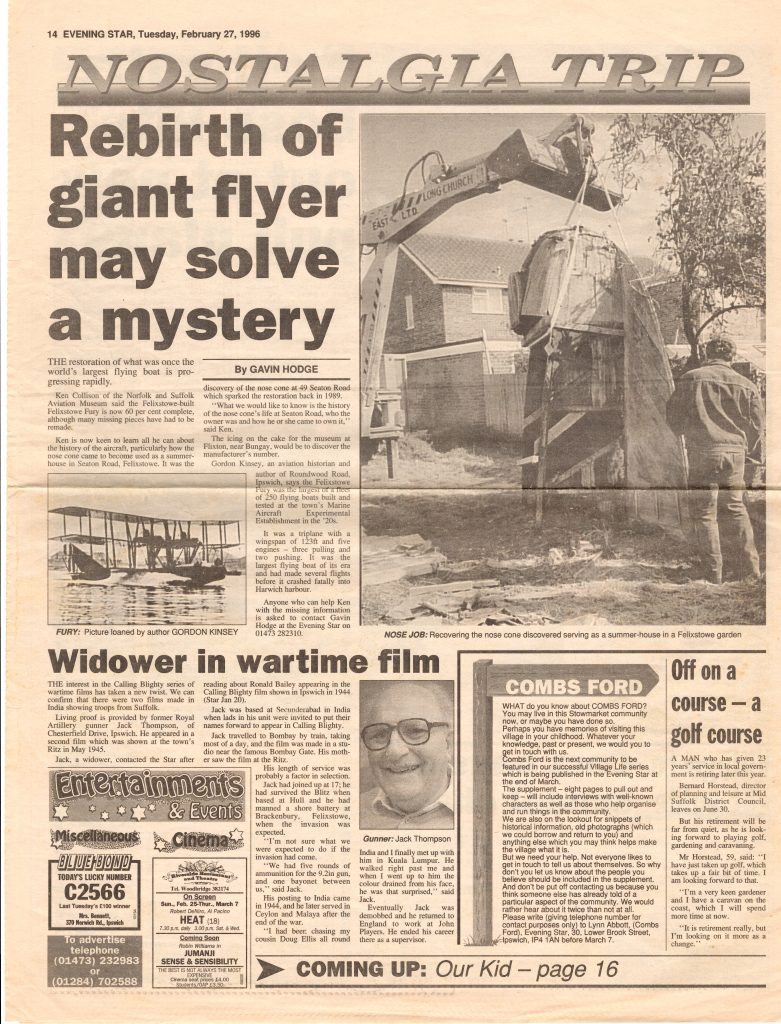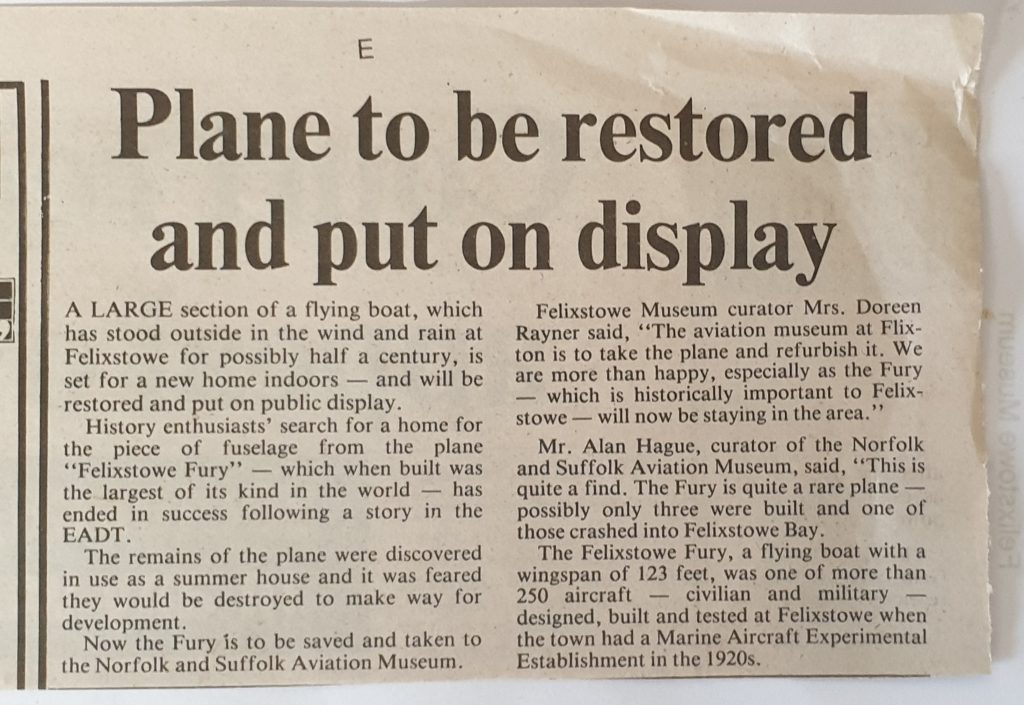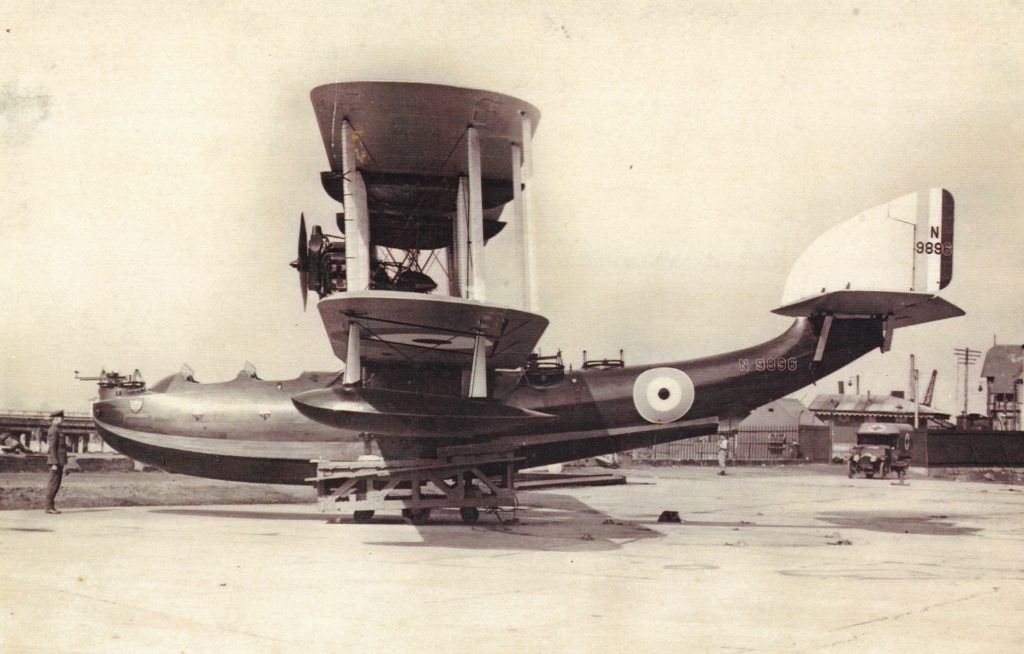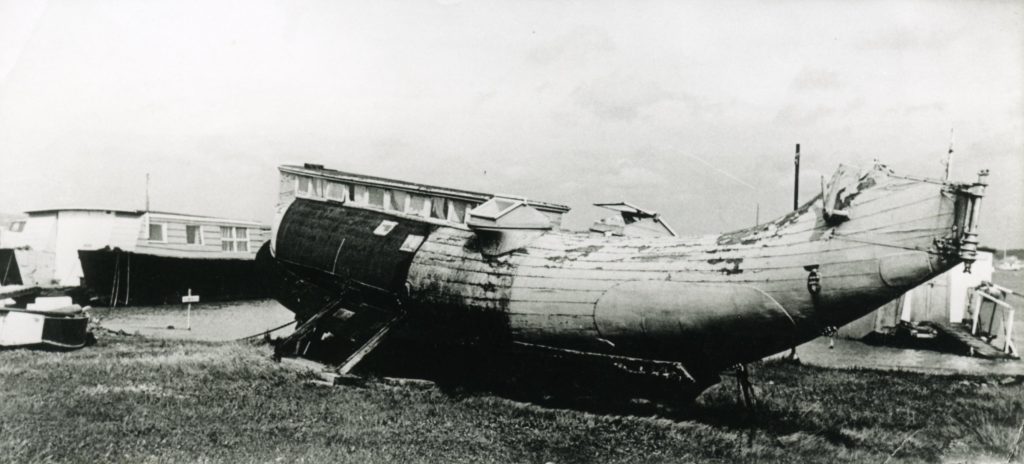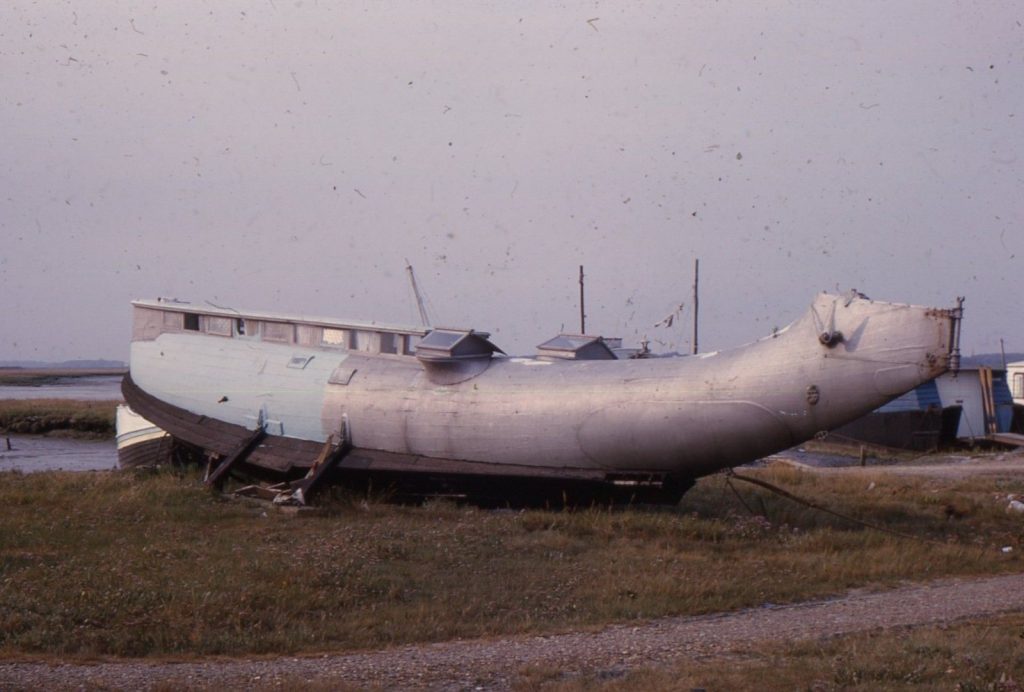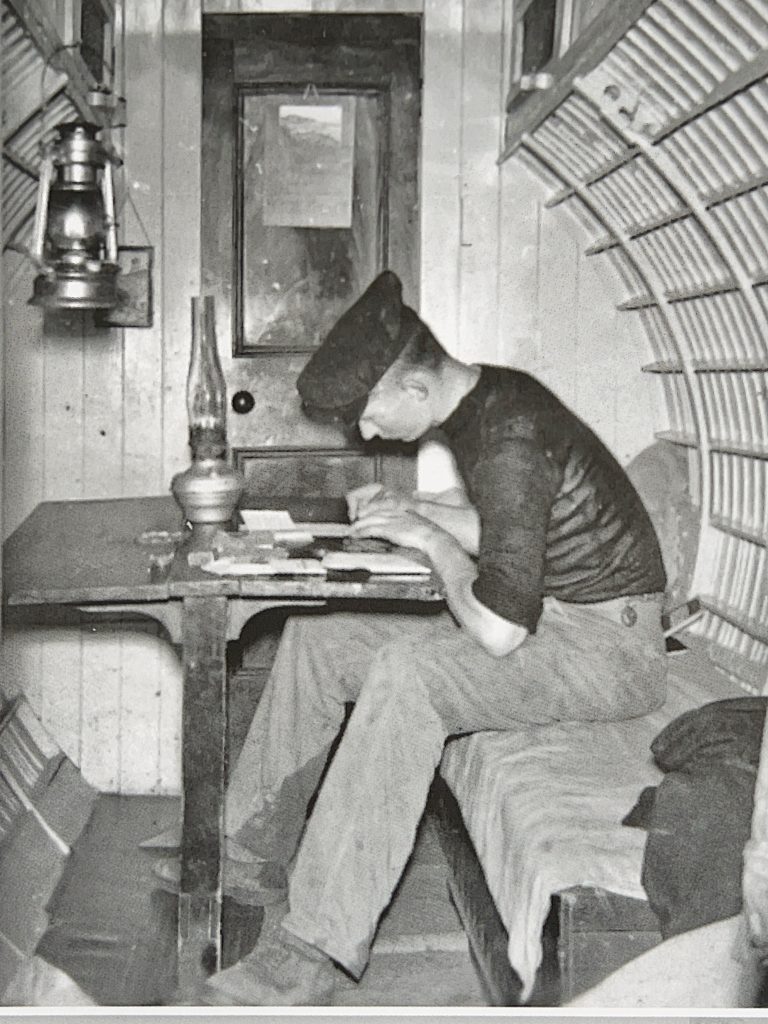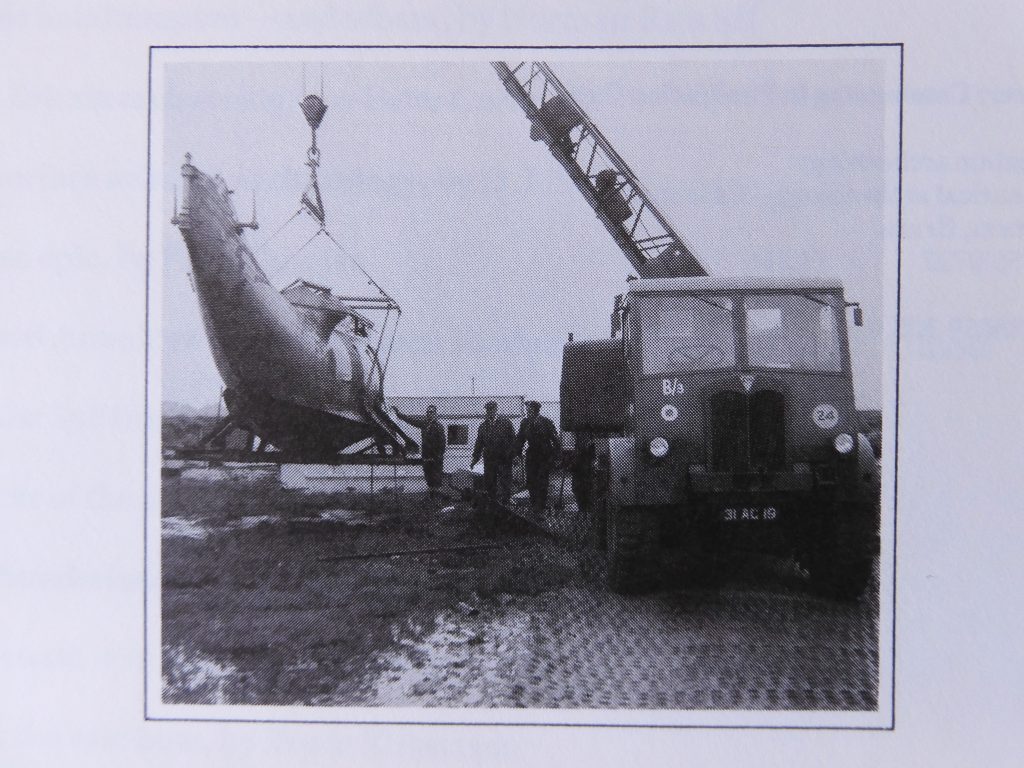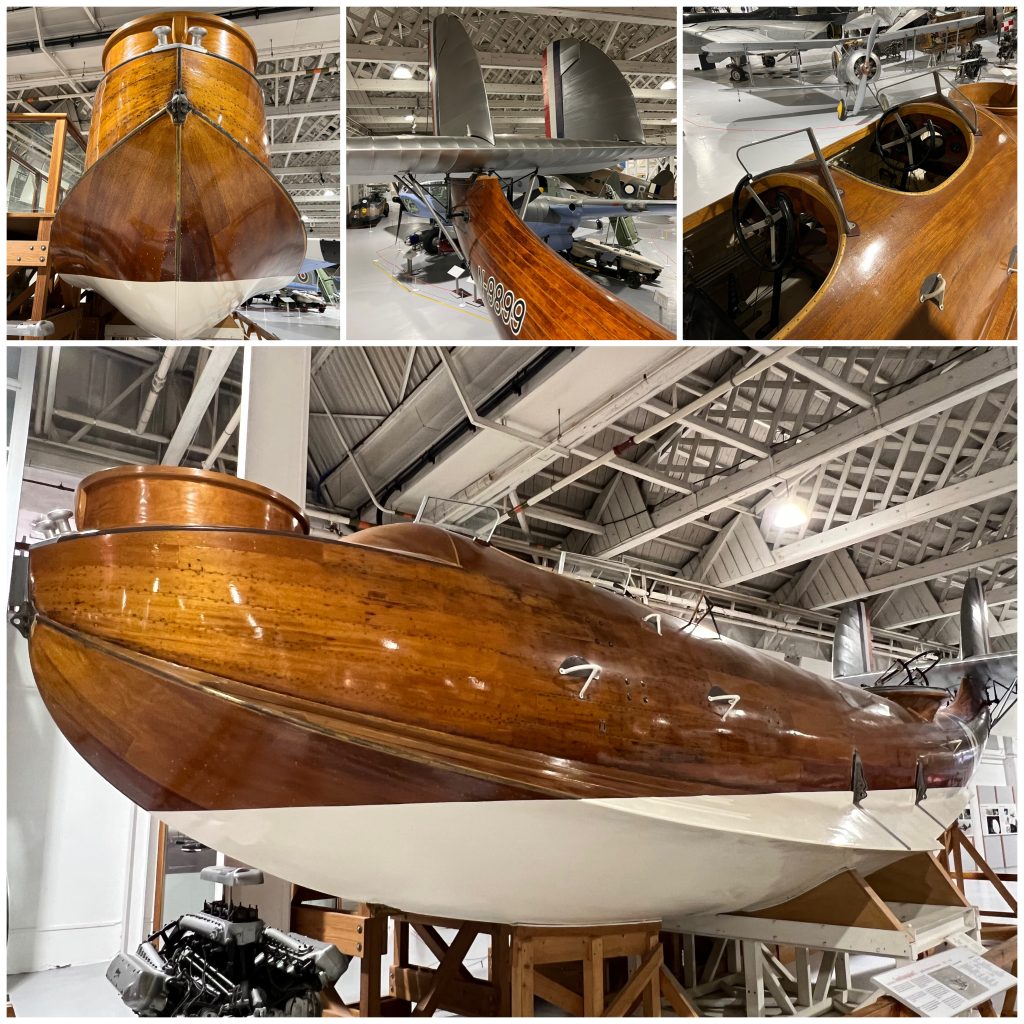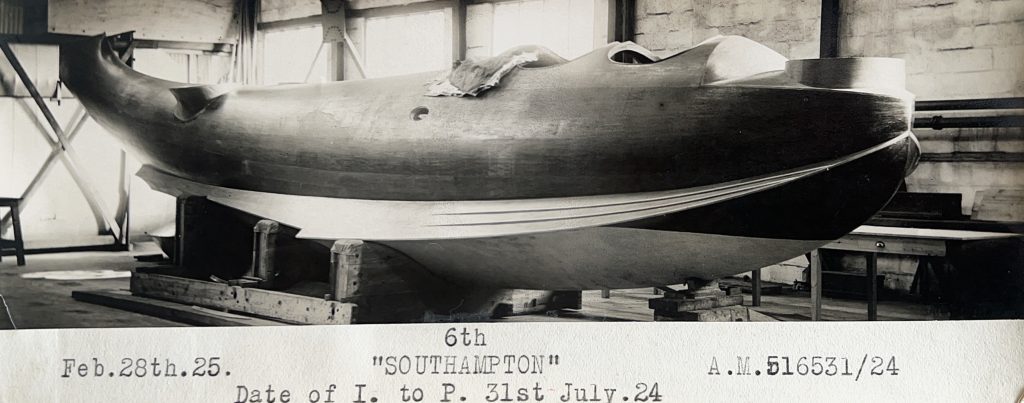By Phil Boak
Between the years 1913-1962, Felixstowe was a major flyingboat base, with the aircraft operating from the River Orwell on the site now occupied by the Docks. Operating during WW1, flyingboats partook in anti-submarine patrols of the North Sea. In the interwar years, the focus switched to research and development, with the performance of the seaplanes and flyinboats carefully evaluated through tests and trials. On completion of their operational lives, several of the larger flyingboat hulls were taken to the hamlet of Felixstowe Ferry and repurposed as houseboats, providing picturesque, if not cramped accommodation. This short article brings together before-and-after images of six such flyingboats, with a summary about what is currently known about them.
Fairey Atalanta N119 (Figures 1.1 – 1.7)
Figure 1.1: Fairey Atalanta at Felixstowe – note the ‘Littleships’ Hotel’ to right of image
Figure 1.2: Fairey Atalanta at Felixstowe
Figure 1.3: Fairey Atalanta houseboat at Felixstowe Ferry (John Smith collection)
Figure 1.4: Fairey Atalanta houseboat at Felixstowe Ferry (John Smith collection)
Figure 1.5: Fairey Atalanta houseboat at Felixstowe Ferry 1964 (John Smith collection)
Figure 1.6: Fairey Atalanta houseboat plan (John Smith collection)
Figure 1.7: Fairey Atalanta press cutting
The Atalanta first flew 4 July 1923, at the time being the world’s largest flyingboat with a wingspan of 139ft. The aircraft was designed by the Fairey Aviation Company for open-sea reconnaissance duties with the Navy, and had full sleeping accommodation for a crew of six. At the end of its useful service life, the hull was converted into a houseboat accommodating four people in two cabins, with a galley, dining area and WC. Sadly, the Atalanta was broken-up around 1964.
Fairey Titania N129 (Figures 2.1 – 2.3)
Figure 2.1: Fairey Titania at Felixstowe
Figure 2.2: Fairey Titania at Felixstowe 2
Figure 2.3: Postcard of Felixstowe Ferry. Fairey Titania to right and Vickers Valentia to left
The Titania was virtually identical to the Atalanta, save for the mark of engine and gross weight. It first flew at Felixstowe 24 July 1925, undergoing trials until 1928. The postcard of Felixstowe Ferry depicts what is believed to be the Fairey Titania to the right, and to the left can be seen a short segment of the tail of the Vickers Valentia N126. Details of the Titania at Felixstowe Ferry are scarce, and apart from the postcard no other image has come to light of the Titania as a houseboat.
Vickers Valentia N126 (Figures 3.1 – 3.3)
Figure 3.1: Vickers Valentia flyingboat
Figure 3.2: Vickers Valentia houseboat at Felixstowe Ferry (John Smith collection)
Figure 3.3: Vickers Valentia houseboat to right at Felixstowe Ferry
The Vickers Valentia was a long-range flyingboat powered by two Rolls Royce engines. Only three were ever built (N124, N125, N126). The hull was of robust build, with the plywood reinforced by having copper wire sewn through it longitudinally. Extensive trials took place at Felixstowe, including testing a Coventry Ordnance Works (COW) gun in the nose of the aircraft. Although pictured at the Ferry in at least four images, virtually nothing is known of the time Valentia N126 was used as houseboat. Perhaps readers can help?
Felixstowe F2A (Figures 4.1 – 4.4)
Figure 4.1: Felixstowe F2A at Felixstowe
Figure 4.2: Felixstowe F2A
Figure 4.3: Postcard of Felixstowe Ferry. Felixstowe F2A houseboat to left
Figure 4.4: Felixstowe F2A article
Designed by John Porte, the Felixstowe F2A entered service in 1917. With its six-to-nine-hour endurance and heavy armament, it was the mainstay of Britain’s long-range anti-submarine and anti-zeppelin patrols during WW1. At the Ferry, the hull of an F2A was converted by Ernest Arnott into a most desirable houseboat through the addition of large windows and significant interior modifications. The conversion can be seen in the postcard to the right.
Felixstowe F5 (Figures 5.1 – 5.6)
Figure 5.1: Felixstowe F5 at Felixstowe
Figure 5.2: Felixstowe F5 nose restored at Norfolk and Suffolk Aviation Museum
Figure 5.3: Felixstowe F5 nose restored at Norfolk and Suffolk Aviation Museum 2
Figure 5.4: Felixstowe F5 nose used as seating area at Seaton Road
Figure 5.5: Felixstowe F5 article
Figure 5.6: Felixstowe F5 article 2
Designed to be a replacement for the F2A, the F5 actually had a lower performance than its predecessor. The aircraft entered service after WW1, serving as the newly formed RAF’s standard flyingboat until the Supermarine Southampton came into service in 1925. Remarkably, an upturned nose-section of the flyingboat was discovered by developers in Seaton Road in 1989, where it had been used as a walk-in potting shed (middle image). The F5 nose was recovered and restored, now on display at the Norfolk and Suffolk Aviation Museum (right image). Reports indicate that a second F5 was used as a changing room at Hadleigh Tennis Club.
Supermarine Southampton N9899 (Figures 6.1 – 6.7)
Figure 6.1: Supermarine Southampton
Figure 6.2: Supermarine Southampton houseboat at Felixstowe Ferry (John Smith collection)
Figure 6.3: Supermarine Southampton houseboat at Felixstowe Ferry 2 (John Smith collection)
Figure 6.4: Supermarine Southampton houseboat interior (Martin Vince)
Figure 6.5: Supermarine Southampton being transported from Felixstowe Ferry
Figure 6.6: Supermarine Southampton preserved at RAF Museum Hendon
Figure 6.7: Supermarine Southampton in build, later preserved at Hendon
The Supermarine Southampton was designed by R J Mitchell (of Spitfire fame). Produced between 1924-1934 it entered service into the RAF in 1925 and became one of the most successful of the inter-war flyingboats. The fourth Southampton to be built, N9899, was of wooden hull construction. In 1929, the hull was purchased by Mr Kemp, and converted into a houseboat by Herby Kerry, and sold to the Vince family in 1952. The hull survived the floods of 1953, and resided at the Ferry until 1966 when it was saved by the RAF Museum. It is now on display at Hendon.
Do you remember these flyingboats? The author of this article, Phil Boak ([email protected]), would be very interested to hear from anyone with further memories, information or anecdotes concerning these flyingboats, as well as any unpublished images, newspaper cuttings, postcards or other original source material. Memories from those who visited or resided in the flyingboats, or anyone knowing Ernest Arnott, are particularly appreciated.
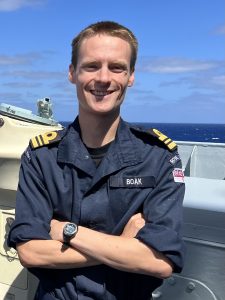
Phil Boak

